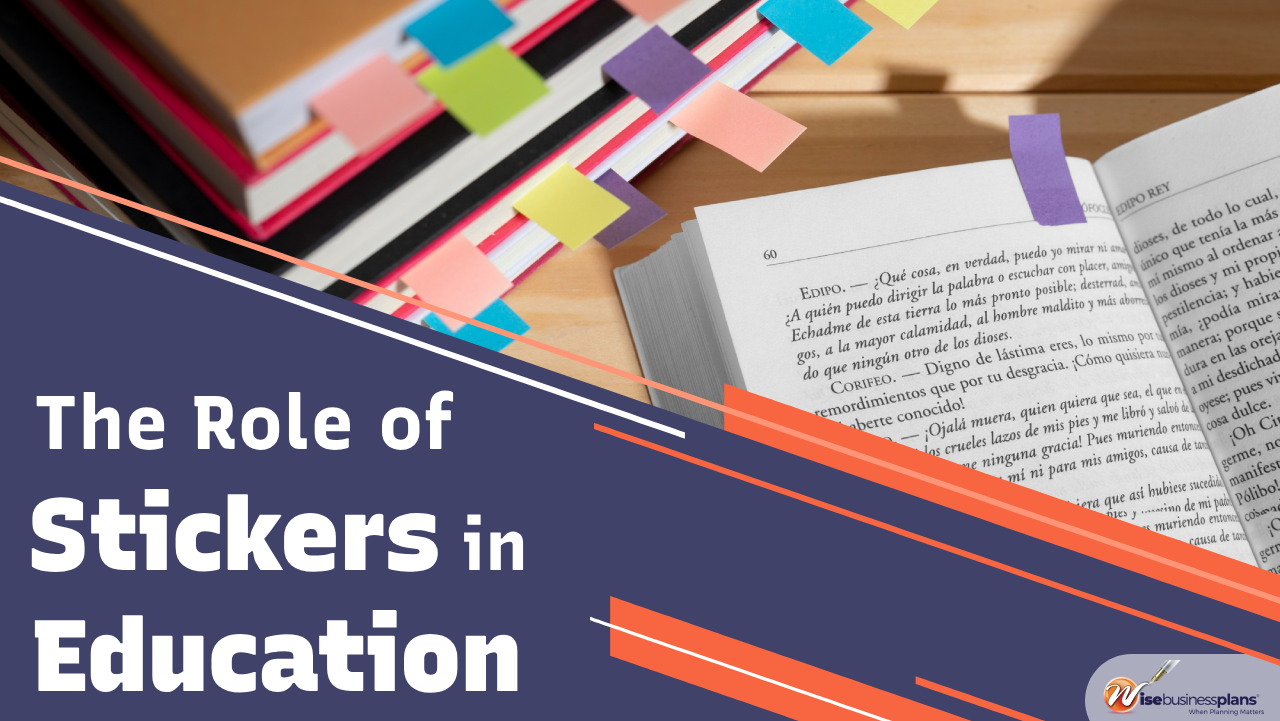The Role of Stickers in Education
Stickers are not just playful decorations; they can also play a valuable role in education. From preschool classrooms to college campuses, stickers have found their way into educational settings as effective tools for enhancing learning and engagement.
[lwptoc]
Stickers in education have a natural appeal to learners of all ages. They provide tangible rewards, encourage creativity, and offer a sense of accomplishment. Incorporating stickers into educational practices can significantly contribute to student motivation, participation, and overall learning outcomes.
Enhancing Motivation and Reward Systems
Stickers have a natural appeal to learners of all ages. They provide tangible rewards, encourage creativity, and offer a sense of accomplishment. Incorporating stickers into educational practices can significantly contribute to student motivation, participation, and overall learning outcomes.
Need Competitive Professional Business Plan Writing Service?
Hire business plan professionals today.
Facilitating Skill Development
Stickers can be used as educational tools to facilitate skill development. Teachers can create sticker-based activities that require students to demonstrate their understanding of concepts, problem-solving abilities, or creativity. Stickers can serve as visual cues, prompts, or indicators of mastery, making the learning process more interactive and enjoyable.
Encouraging Active Participation
By incorporating stickers into classroom activities, teachers can encourage active participation among students. Stickers can be awarded for contributing to class discussions, asking insightful questions, or engaging in group projects. The use of stickers fosters a positive classroom culture where students feel encouraged to actively contribute and share their ideas.
Promoting Organization and Creativity
Stickers can be utilized to promote organization and creativity among students. Teachers can provide sticker labels for organizing notebooks, folders, or materials, helping students stay organized and develop good study habits. Additionally, stickers can be used in creative projects, such as creating visual representations, collages, or timelines, allowing students to express their creativity while learning.
Explore our Diverse Business Plan Examples or Samples
Fostering Positive Learning Environments
Stickers contribute to the creation of positive and inclusive learning environments. By using stickers to celebrate diversity, recognize different achievements, or showcase students’ unique talents, teachers can foster a sense of belonging and appreciation among students. Stickers can be customized to represent different cultures, languages, or interests, promoting a positive and inclusive classroom atmosphere.
Supporting Progress Tracking and Goal Setting
Stickers can play a role in tracking student progress and goal setting. Teachers can provide students with sticker-based charts, where they can track their accomplishments or progress toward specific learning objectives. Stickers can serve as visual markers of milestones achieved, motivating students to continue their efforts and strive for further success.
Conclusion
Stickers offer a range of benefits in educational settings, enhancing motivation, engagement, and overall learning outcomes. By incorporating stickers into teaching practices, educators can create dynamic and interactive learning experiences that foster student participation, creativity, and a positive classroom culture. Whether used as rewards, organizational tools, or creativity enhancers, stickers have a place in education as valuable assets for both teachers and students.
Find top-notch business plan writing companies now!
The Role of Stickers in Education. FAQs:
In early childhood education, stickers can be used for various purposes, such as rewarding positive behavior, reinforcing concepts, or developing fine motor skills through sticker-based activities.
Yes, stickers can be adapted to suit the needs of older students and college-level education. They can be used as rewards, study aids, or visual markers of achievements and progress.
Stickers can promote creativity by allowing students to use them in artistic projects, creating visual representations, or incorporating them into storytelling activities.
Yes, stickers can be incorporated into individual goal-setting practices. Students can use stickers to track their progress, mark milestones, or reward themselves when they achieve specific objectives.
Yes, digital stickers can be used effectively in online or technology-enhanced learning environments. They offer similar benefits in terms of motivation, engagement, and visual reinforcement.












